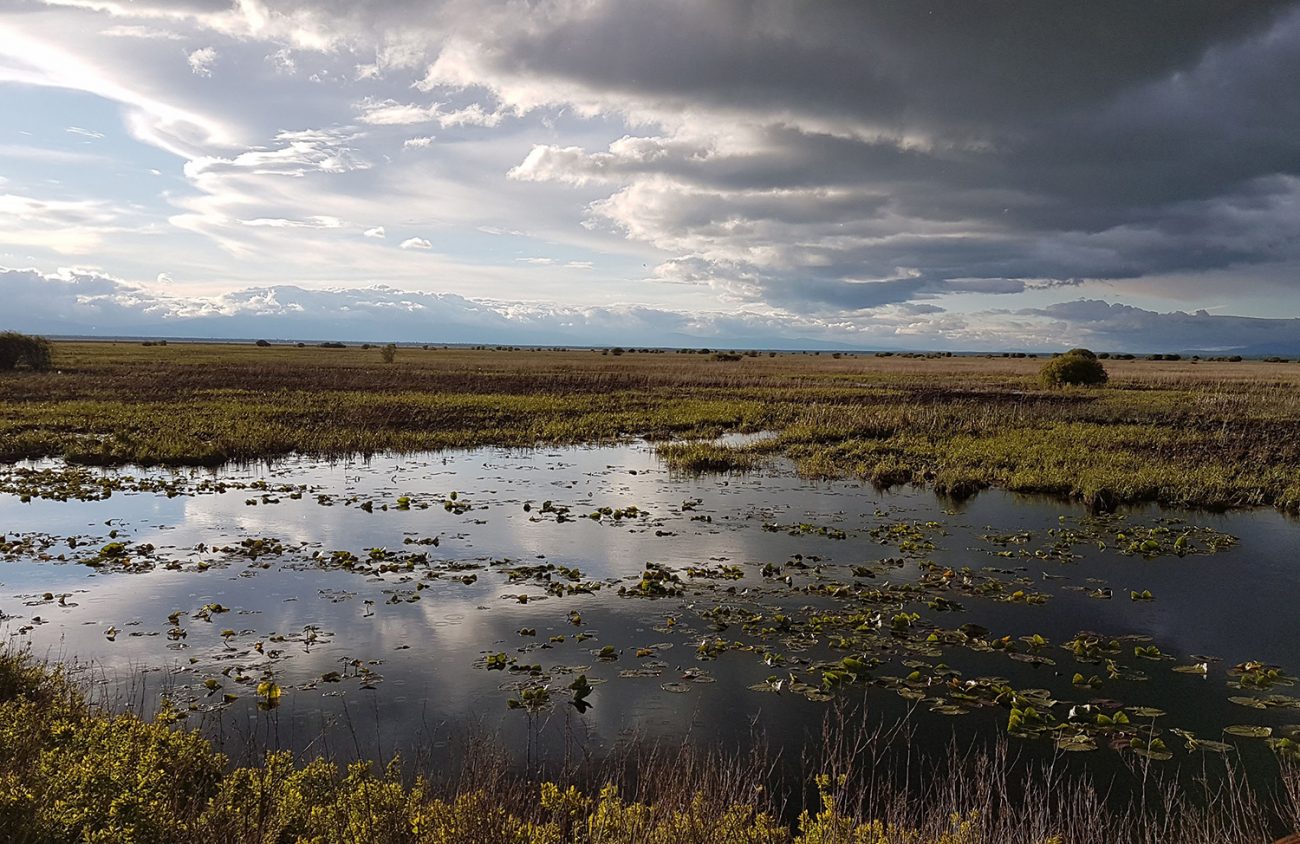Water is a necessity for life, but Oregon is already facing a drought. According to the U.S. Drought Monitor’s weekly update, 71.7 percent of Oregon is in a severe drought, and parts of Eugene are in an extreme drought, along with 26 percent of the state.
Those more likely to be affected by drought and natural disasters that impact water supplies are communities of color, according to a new report published May 25 by Oregon Water Futures Project, a collaboration between the University of Oregon, water and environmental justice groups, Indigenous people, communities of color and low-income communities.
After conducting 108 interviews throughout the state during 2020, water and social justice advocates reported that low-income and BIPOC communities are hit first and hardest by a decreasing water supply. But one of the leading authors of the report says that communities of color have an extensive knowledge of water management that can help the state’s water resources.
Alaí Reyes-Santos, an associate professor of Indigenous, Race and Ethnic Studies at the UO, is one of the lead authors of the report. She’s also the associate director of PNW Just Futures Institute for Racial Justice at the UO.
She tells Eugene Weekly the report was based on interviews with Latinx, Indigenous and Black communities in eight Oregon counties, including Lane. The interviews were conducted in the language most comfortable to the participant, Reyes-Santos says, and authors worked with local community organizations in arranging interviews. In Eugene and Portland they interviewed 20 people in partnership with the NAACP Eugene/Springfield, Coalition of Communities of Color and Verde.
In the U.S., the mainstream narrative on water is that it’s to be commodified and sold, Reyes-Santos says. So that means you need money to access it. There can be public health issues if you’re cut off from water, she says, pointing to the people of Flint, Michigan, who haven’t had reliable, clean water.
Throughout the state of Oregon, communities of color told the report’s authors that they’ve been impacted by poor water quality — from a lack of water access to foul-smelling water coming out of the faucet. What was unique about interviews held in Lane County was that there is more trust in the water supply. “You can drink it from the tap,” she says. Throughout the state, some participants told interviewers that they had to buy bottled water, she adds.
EWEB’s assistance program was also accessible for communities of color in Eugene, she says, but the participants told authors that they couldn’t have a vegetable garden because of water costs. Creating a garden isn’t as simple as planting, Reyes-Santos says, because the cost of water resources to sustain it is a limiting factor for communities of color.
With climate change already affecting rainfall in Oregon, water resources for gardens are stressed even further, she says, but people interviewed expressed interest in rainwater harvesting for cleaning and gardening.
In Eugene, Reyes-Santos says participants reported they were informed during natural disasters, but weren’t prepared. She says participants told her they were stressed about having enough money to stay at home, to relocate or to buy food that can last several days.
Water plays a role in faith practices in Oregon, too. Reyes-Santos says a Nepali participant talked about how he used water in prayer, and a Jamaican interviewee would go to the sea to be nurtured, following Afro Caribbean practices.
Statewide, themes in the report found that participants didn’t feel prepared for emergency scenarios. In 2018 a toxic algae bloomed in a Detroit reservoir, resulting in a warning to not drink tap water in the cities of Salem, Woodburn and other communities. The report says participants experienced price gouging at local supermarkets and a lack of public health information about the water crisis.
In conversations with communities of color throughout Oregon, she says there was a respect for water. “You need to honor water because it’s a finite resource,” she says. “It’s not a question of water conservation but community — if you waste it, future generations won’t have it.”
These cultural values show communities of color know about water, she says. There’s a gap between technical policy experts and community experts, she adds. “That requires that openness to hear community members as experts,” she says.
Growing up with water scarcity forces people to adapt so everyone has enough, she says. Some people have learned cultural methods to sanitize water that the U.S. could learn, Reyes-Santos says, such as using sunlight, glass or cloth filters.
“What is powerful about this project is how U.S. communities can learn from migrant communities, from Native and other communities of color on how to care for water resources,” she says.
In 2019, the city of Eugene developed the Climate Action Plan 2.0. By 2040, according to the plan, the area will see a 40 to 60 percent decrease in stream flow due to reduced snowmelt, according to the report. And the area will see an influx of climate migrants to the area.
Reyes-Santos says she worries climate change narratives will become anti-migration, that the outsiders are causing water scarcity, because you never know if you’ll become a migrant. “Like any resource, we can have a lot of it, but it matters about management,” she says. “Are we managing it to see a future?”
To read the report in its entirety, visit OregonWaterFutures.org.
